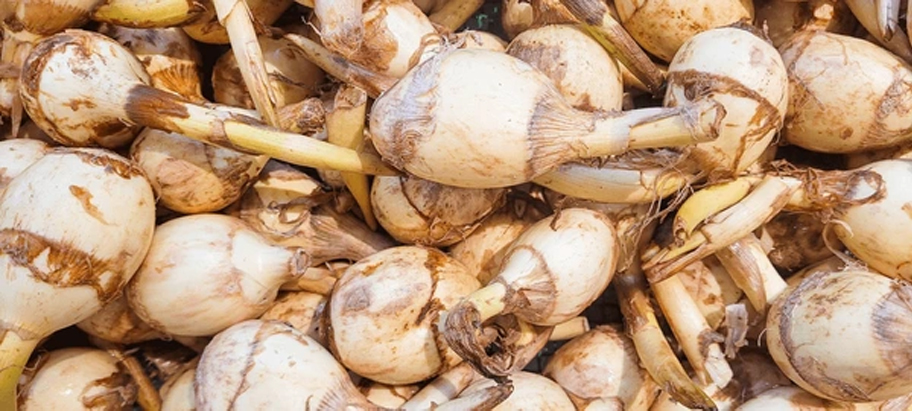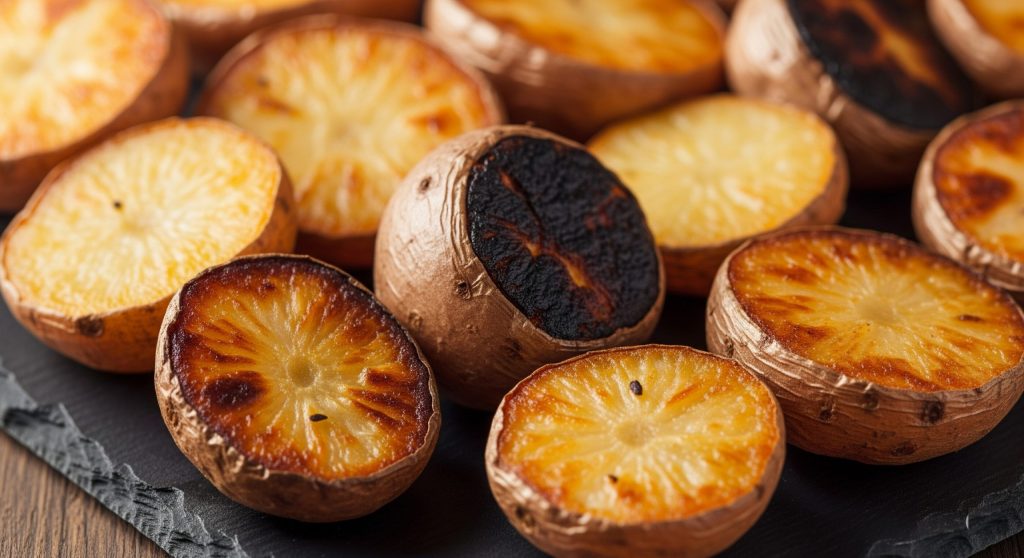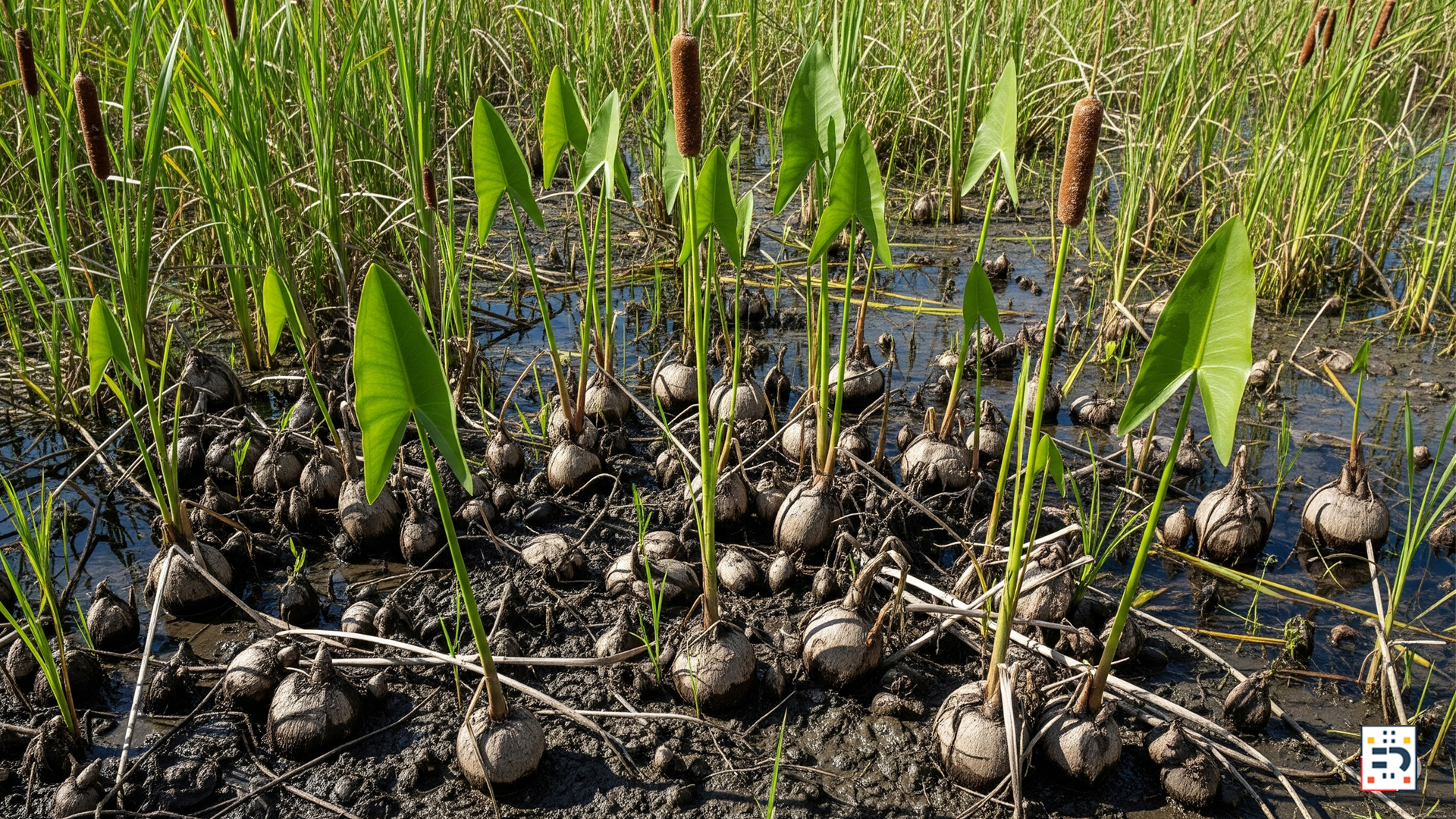When you hear “potato,” images of Idaho russets or red new potatoes likely come to mind. But across the diverse landscapes of the United States, particularly within its vast wetlands, exists a fascinating and often overlooked category of tubers sometimes referred to as “swamp potatoes.” These aren’t your typical garden variety; they represent a unique array of native aquatic plants, deeply rooted in the ecological and cultural history of the continent.
What Exactly Are “Swamp Potatoes”?
The term “swamp potato” is a broad, common name, most frequently referring to species within the Sagittaria genus, commonly known as arrowheads or duck potatoes. These obligate wetland plants thrive in shallow waters, marshes, and the edges of ponds and streams across temperate North America. Their distinctive arrow-shaped leaves often give them away, but it’s their starchy, edible tubers, found underground in the mud, that earn them their “potato” moniker.
It’s crucial to distinguish these native “swamp potatoes” from the invasive Air Potato (Dioscorea bulbifera), a non-native vine from Asia and Africa. While it produces small, potato-like aerial tubers (bulbils), these are generally inedible and the plant itself is a significant ecological threat, smothering native vegetation in many Southern states, particularly Florida. Understanding this distinction is vital for both environmental awareness and safe foraging.

A Native American Staple: Wapato’s Rich History
Long before European colonization, native Sagittaria species, often called Wapato by various Indigenous tribes, were a vital food source. Tribes across the Great Lakes, Pacific Northwest, and Southeastern United States relied on these tubers, particularly in autumn and winter when other food sources were scarce. Harvesting was often a communal activity, with individuals wading into shallow waters and using their feet to dislodge the tubers, which would then float to the surface. They were consumed in various ways: roasted in ashes, boiled, or dried and ground into flour. This historical significance highlights their role in traditional diets and wetland ecosystems. You can learn more about Indigenous food systems and their deep connection to the land through resources like the Native American Agriculture Fund.
Culinary Potential and Modern Revival
While not a commercial crop like the common potato, “swamp potatoes” (referring to Sagittaria species) offer an intriguing culinary profile. Their flavor is often described as subtly sweet and starchy, with a texture similar to a water chestnut or a firm potato.
Today, there’s a burgeoning interest in foraging edible wild plants and re-connecting with native food sources across the USA. Some chefs and home cooks are exploring the culinary potential of wild-harvested wapato, incorporating them into dishes that celebrate regional ingredients. Their unique flavor and texture can add an exciting dimension to American cuisine.
Simple Roasted Wapato (Swamp Potatoes) Recipe
Foraging for Wapato requires careful identification and ethical practices, ensuring you have landowner permission and are not in a protected area. Always consult local regulations and consider taking a reputable wild edibles foraging class if new to foraging. If you’re lucky enough to find or purchase some properly identified Wapato tubers from a trusted source (some native plant nurseries, like Northwest Meadowscapes or Green Canvas Farms, sometimes offer tubers or seeds for cultivation, making it possible to grow your own “duck potatoes” if you have a suitable wetland environment), here’s a simple recipe to enjoy their unique flavor:
Yields: 2 servings Prep time: 10 minutes Cook time: 20-30 minutes
Ingredients:
- 1 cup fresh Wapato tubers (ensure they are thoroughly cleaned of mud and debris)
- 1 tablespoon olive oil or melted butter
- 1/4 teaspoon salt (or to taste)
- Pinch of black pepper
- Optional: Fresh herbs like rosemary or thyme, minced garlic
Equipment:
- Baking sheet
- Parchment paper (optional, for easier cleanup)
Instructions:
- Preheat Oven: Preheat your oven to 400∘F (200∘C).
- Prepare Wapato: Rinse the Wapato tubers thoroughly under cold water. Use a vegetable brush to remove any remaining mud. While some choose to peel them, the skin is thin and edible, especially when roasted. If you prefer to peel, a small paring knife can be used carefully. Cut larger tubers into halves or quarters to ensure even cooking, keeping pieces roughly uniform in size.
- Season: In a medium bowl, combine the cleaned and cut Wapato tubers with olive oil (or melted butter), salt, and pepper. If using, add fresh herbs or minced garlic. Toss until the Wapato pieces are evenly coated.
- Roast: Spread the seasoned Wapato in a single layer on a baking sheet. You can line the baking sheet with parchment paper for easier cleanup.
- Cook: Roast for 20-30 minutes, or until the Wapato pieces are tender when pierced with a fork and slightly browned and caramelized on the edges. Flip them once or twice during cooking to ensure even browning.
- Serve: Remove from the oven and serve immediately as a unique side dish. They pair well with roasted meats, fish, or as a standalone snack.
Notes on Flavor & Texture: Roasted Wapato will have a slightly firmer, more fibrous texture than a common potato, reminiscent of a water chestnut, with a subtle sweetness. For other Wapato recipes, you might explore options like wapato chips or using them in stews, similar to how you’d use potatoes.

Ecological Importance and Conservation
Beyond their culinary uses, Sagittaria species play a significant role in wetland ecosystems across the USA. They provide food and habitat for waterfowl (hence “duck potato”) and other wildlife. Their presence helps stabilize soil, filter water, and contribute to the overall biodiversity of these crucial habitats.
However, wetland degradation and loss due to development, pollution, and invasive species pose a threat to these native wetland plants. Conservation efforts aimed at protecting and restoring wetlands are therefore vital for the continued existence of “swamp potatoes” and the many species that depend on them. Understanding and appreciating these unique tubers can be a small step towards recognizing the value of America’s wetlands and supporting their preservation. Organizations like the National Wetlands Research Center (USGS) offer valuable insights into wetland conservation.
The story of “swamp potatoes” in the USA is one of ancient sustenance, ecological importance, and a growing modern curiosity. As we increasingly seek sustainable and locally sourced foods, these often-overlooked tubers offer a glimpse into a rich natural heritage. While not destined to replace the familiar potato in our pantries, understanding and respecting “swamp potatoes” can deepen our connection to the land and its forgotten culinary treasures.


